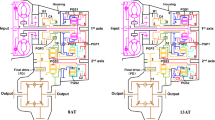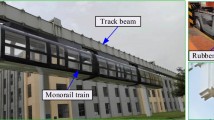Abstract
As before, the city bus stands in the shadow of the coach, which has always received much more attention in the areas of design as well as passenger comfort. The rigid front axles employed by the majority of city bus manufacturers, even with air springs, are far removed from offering the travel comfort of independent suspension, which has for years been the standard in coaches. This article presents an independent suspension system for city buses developed by ZF Fried-richshafen AG and the design details that have been implemented.
Similar content being viewed by others
References
Eickhoff, M.; Faber, A.; Gawinski, H.; Hahn, P.: Erhöhung des Fahrkomforts von 100-Prozent-Niederflurbussen. In: Der Nahverkehr 6/2004, S. 23–27
Wimmer, H.: Modern Front Axle systems for Low Floor buses and Coaches. SAE Paper 982776, 1998
Eickhoff, M.; Wimmer, H.: Entwicklung von Achsführungen für Busse — kinematische und konstruktive Gesichtspunkte. HdT/ika Fahrwerktagung, Osnabrück, 2001
Eickhoff, M.; Wimmer, H.: Einzelradaufhängungen — ein Baukastensystem für Stadt- und Reisebusse sowie Einsatzpotentiale bei Lkw. VDI Berichte Nr. 1760, 2003
Rights and permissions
About this article
Cite this article
Wimmer, H., Alsdorf, F. Modern Front axle systems for city buses. ATZ Worldw 108, 2–5 (2006). https://doi.org/10.1007/BF03224810
Issue Date:
DOI: https://doi.org/10.1007/BF03224810




